La Cruz to Rio Sereno 12/10/09 to 3/11/09 - 952 km (total km’s 17700)
Costa Rica, Pura Vida
One of the joys of bike touring is not always so much about the riding, but it’s about getting to out of the way places and experiencing nature. We had really wanted to see nesting sea turtles at some stage in Central America, and from the map it seemed like a beach called ‘Playa Ostional’ might be a chance. However when we asked about riding there along the coastal dirt road from Playa Tamarindo, everyone (the nay-sayers) told us “it’s not possible at this time of year, there’s too many river crossings and no bridges...no, no es posible, es un camino muy malo”. Well that’s just like saying “go ahead and try it” to us, after all what’s the worst that could happen?...we could always turn back!
Well the coastal road on the Nicoya Peninsula turned out to be one of the more memorable days riding in Costa Rica, almost no traffic, past deserted beaches and only two river crossings, the first we could ride through and the second was only ankle deep (well our socks did get wet!), but nothing like we were made to believe.
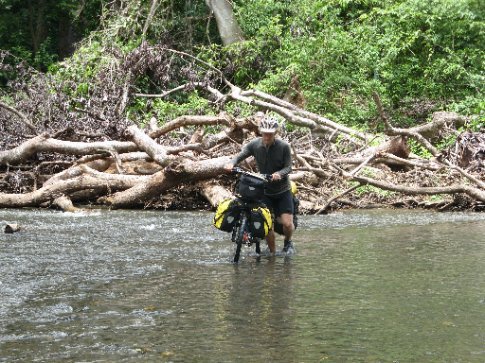
Nobody had however mentioned the hills. The short steep pinch climbs out of the creeks that characterised the coast was the hardest thing about this section of riding. But otherwise an awesome ride. This is really what bike touring is about...it is about the riding, riding dirt roads to nearly inaccessible beaches to hopefully see turtles laying eggs. And with that we rode out of the forest and alongside the wild Pacific Ocean and Playa Ostional.
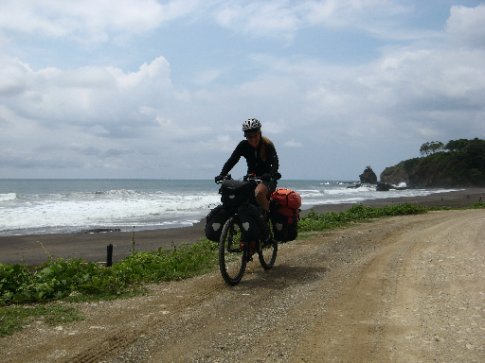
Playa Ostional is a long black sand beach, littered with driftwood, the remains of turtle eggs, stray dogs, hundreds of black vultures (‘Zopilotes’), and the raging pacific coast surf. What a dramatic place the olive ridley turtles have chosen to return to year after year to lay their eggs. This beach is the most important olive ridley nesting spot in Costa Rica and one of only a few in central america and the world where this species of turtle comes ashore simultaneously in their thousands to lay their eggs at the same time. These events are known as ‘arribadas’ (or arrivals) and occur once or twice a month between August and November.
The ‘Refugio Nacional de Vida Silvestre Ostional’ (the beach at Ostional) is under the protection of the Costa Rican government, but here they are in conflict with a local community organisation ADIO over conservation of the turtles. Both say that the other is only after the ‘money’and doesn’t care about conservation, and both say that you should only go with one of their guides, the local ADIO guides, or the accredited government guides. We were not sure which side of the story to believe, but chose to go with an accredited guide. Unfortunately the apathetic girl from ‘Cabinas Ostional’ forgot to organise our ‘accredited’ guide so at 10pm, with no lights on and no sign of a guide we decided not to waste the night and make our way down to the beach on our own.
It was dark and eery and the beach seemed heavily guarded with patrolling spotlights every 100 metres or so, “maybe we shouldn’t be out here” I thought, but Anna, not to be put-off that easily, approached the first spot-light. It turned out to be the president of ADIO (the local community group), who initially was bothered by us being on the beach without a guide. But he must have warmed to our case, because he then said “i’ll take you down the beach and show you a nesting turtle if you like”. Barefoot, we followed him across the river, and along the beach until his torch crossed a turtle track, where he turned at right angles and took us up to a dark lump beneath some trees at the back of the beach. We could then turn on our low torchlight from behind the turtle. There she was, mama turtle perched over the top of her perfectly excavated hole, and with a big sigh and some hard work, one then two slippery looking table-tennis size eggs dropped into the hole. Every contraction produced another one or two eggs onto the growing pile. Steam rose from the nest, she sighed regularly and just like that she was done.
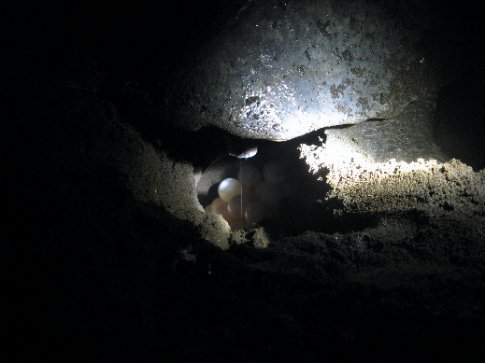
Then with the dexterity of a sand sculpturer she dragged sand back into the hole and then proceeded to whack, pack and compact the sand on top of the new nest in a way that would impress most pavers. She threw her body down side to side with amazing force....’thud, thud, thud’. I think this was the part that impressed me most as I had never really thought about how they repack the sand and disguise their nest. Then she began the long walk back to the ocean, exhausted.
We were lucky enough to head out very early on the last morning and find a late mum on the beach just digging her hole as the sun was rising. We were privileged to sit with her and watch the whole painstaking process for an hour and twenty minutes while we fended off the marauding vultures and turtle nest digging dogs from her and the new nest. So while we didn’t see an arribada, i think we witnessed one of the most amazing experiences of nature.
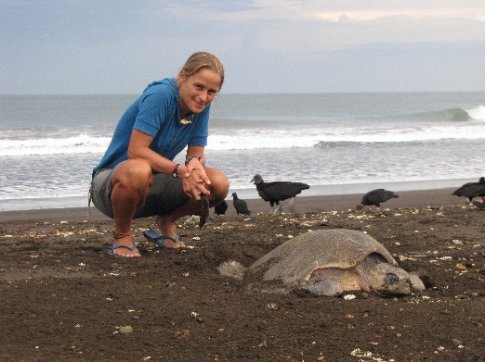

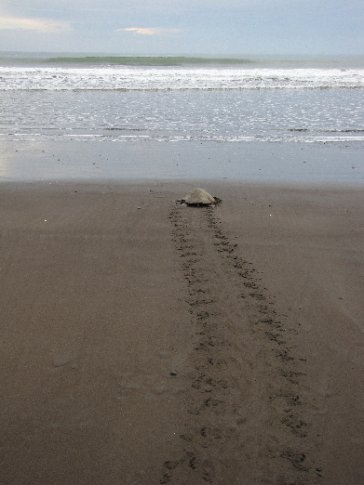
But as always seems to be the case here in Central America, there is no such thing as conservation for the benefit purely of conservation or letting natural processes occur without our interference. In this case, the local community organisation ADIO undertakes ‘sustainable’ egg harvesting of thousands of eggs each ‘arribada’. The eggs are sold for good money to restaurants in San Jose and other places so that the upper class can enjoy this delicacy and in the meantime the community makes a load of money pillaging the turtles nests. We find it disgusting and disturbing and after witnessing the struggle, the effort and the sacrifice that the turtles make to lay their eggs disheartening we are extremely angry with what is going on here. Why?Conservation....this project has nothing to do with conservation, it is all about making money off nature. If this place where this natural phenomenon occurs would be anywhere else in the developed world it would be a world heritage site with serious protection. It’s crazy! (Ali’s rant continues...)
People still fail to see, that even with all the good we are trying to do, we (humans) are still by far the biggest predators and threat to the survival of these ancient but vulnerable and endangered creatures. We hope that maybe one day the turtles will abandon this beach and this pillaging community in favour of another place where they can continue their lives without interference. (end of Ali’s rant!)
Back together with Nobu and Hiro (whom we had met again past the border with Costa Rica but had ridden a different route for a few days) we made our way from the pacific ocean of Playa Samara across the hills of the Nicoya Peninsula, over crocodile infested waters and up into the hills towards Volcan Arenal. Riding next to a lake always seems like a good idea, it never breaks any contour lines on the map and so should pretty well be flat. Wrong again! It ends up to be a really tough day of riding in the rain up from Canas to Tilaran and then the steep roller coaster alongside the lake began. Short, steep 100m or 200m climbs followed by equally steep downhills. We spotted many toucans feeding in the forest and howler monkeys screaming from the tree-tops towards us but it was a tough day in the saddle. Our aim to reach La Fortuna in one day was crushed as we limped up the hill into Nuevo Arenal. It was still 45 km to La Fortuna, we would have to spend the night there. The next mornings ride was spectacular riding through lush green jungle and then the clouds cleared from Volcan Arenal to reveal the smoking crater, which we hadn’t been able to see the day before. Quiet roads, lush green rainforest, toucans, monkeys and a huge perfect shaped volcano at the end of the road...some more perfect riding in Costa Rica.
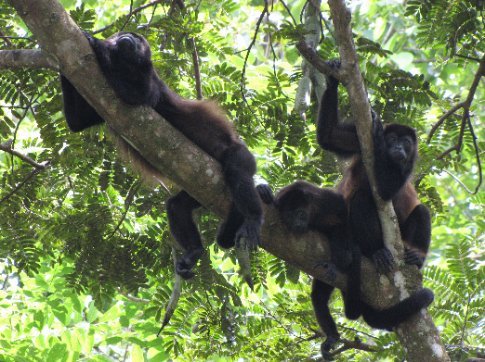
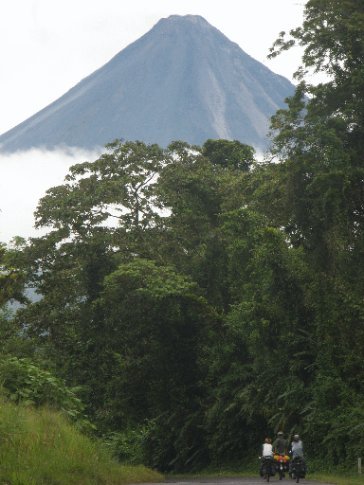
Sadly in La Fortuna we had to say goodbye to Nobu and Hiro for the final time on this trip, as they will be riding to Panama after some time in San Jose before returning home to Japan. This was the fourth time we had met them, firstly in Fairbanks Alaska 14 months ago, then Baja California, then Guadalajara Mexico and now again in Costa Rica. A connection of cycling, and a connection of cultures, we enjoyed our time together. (Sorry to say goodbye, Nobu and Hiro you guys will be missed on the journey south...ありがと amigos!).
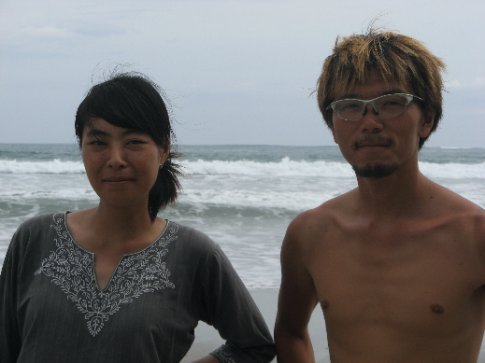
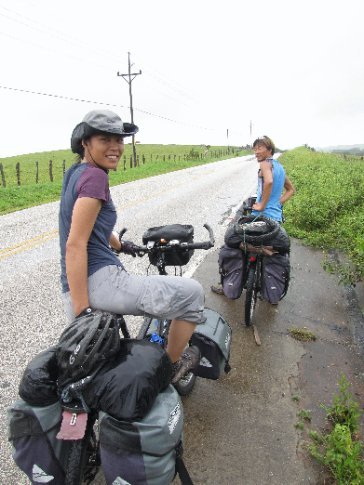
So a little sad in our hearts we began a tough 70km of climbing up onto the Central Valle, only to fall short once again, beaten by the hills and the fading daylight we sought a place to camp at a ‘Soda’ (a small roadside restaurant). ‘Yes, you can camp here under the shelter, we close in 30 minutes and noone will be here, but we’ll show you the lights and there is a toilet you can use too, make yourselves at home’. We were so lucky, we were cold (for the first time in ages) and exhausted and within 20 minutes we were fed with one of our best vegetarian plates in Central America and had a dry place to stay with toilets and running water....that’s the way how our luck changes in an instant and what makes each day it’s own story. Muchas gracias a Heiner y Sonia de la ‘Soda de las Orchidaes’!
After our brief journey into the highlands towards San Jose we realised that the Volcanoes wouldn’t be worth visiting as they are always in the clouds during the rainy season, the hills are brutally steep and that we also didn’t want to take the ‘Cerro de muerto’ (Hill of Death) road towards San Isidro de El General. So we returned back down to the coast to Playa Tarcoles and along the relatively easier route of the pacific coast of Costa Rica. The highlight of these days of riding were witnessing a flock of twenty Scarlet Macaws feeding and flying in the trees above the raging surf. A rare and amazing spectacle.
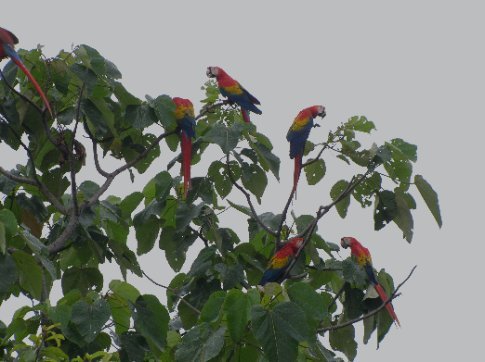
San Isidro de El General and Dominical
From the coast at Dominical it was then a sweaty 1200 m climb up and over the mountains to San Isidro....
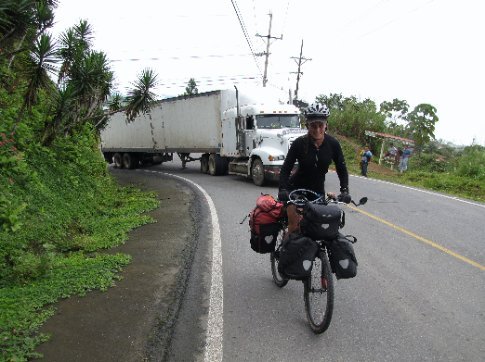
Anna proving once again that bikes really are better than trucks...this one broke down on a sharp, steep corner near the 1200m summit.
PuraSol....Arine y Pierre
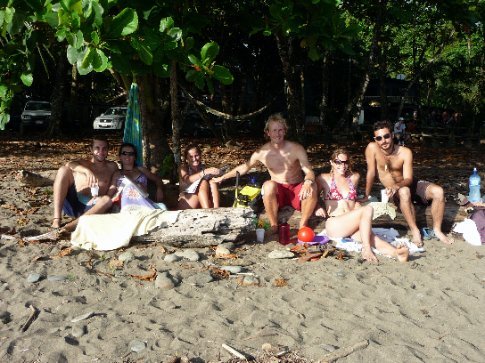
We had long been looking forward to visiting Arine and Pierre in San Isidro. Arine is an old-housemate of Anna's during Utrecht uni years. She is helping her partner Pierre to set up a renewable energy company Purasol, providing integrated micro-energy solutions to landowners. A very brave and exciting undertaking for them, even more so because they are also expecting a little one... We were lucky to catch Pierre on his birthday and together with their friends Olivier and Anne Sophie, we headed back to Dominical for a beach time weekend and the Costa Rican version of Halloween in the local disco. Great to see you again Arine and meeting Pierre!
We took the Inter Americana out of San Isidro expecting a busy truck-filled highway, but instead found a quiet beautiful highway through pineapple plantations next to cloud covered 3000m mountain ranges and then a stunning gorge ride next to the Rio el General. Our plan was then to cross the border into Panama at a quiet border crossing in the mountains which meant another day of climbing on back roads through ‘rural’ Costa Rica.
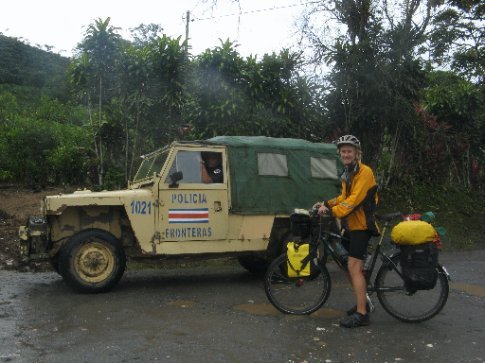
Seemed like a great plan...stay tuned for Panama.